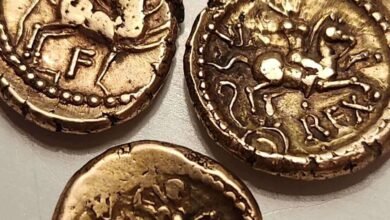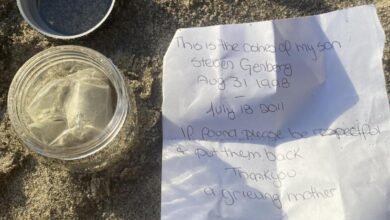Treasure trove: Coins from British and Portuguese empires found in cupboards at Goa Accounts Office | India News

Coins from the reign of the British monarch William IV, silver coins from the Victorian era, copper coins believed to date from the early 19th century during the reign of King Joao IV of Portugal, gold bars, banknotes from various dynasties between the 17th and 19th centuries 20th century pieces are part of a “treasure” recently found in the lockers of a Portuguese-era heritage building that once housed the office of the Goa government’s finance directorate.
The Accounts Directorate office recently moved from the heritage building ‘Facenda’ near the Old Secretariat in Panaji to a new building in nearby Porvorim. As part of the modalities of shifting the files and inventory, the ‘treasures’ were removed from sealed envelopes and old cabinets of the treasury after a gap of 32 years – and this for only the second time since the liberation of Goa.
Goa Chief Minister Pramod Sawant told the media after a Cabinet meeting on Friday that a high-level committee has been constituted to open the sealed cabinets in the accounts department. According to sources, the committee met at ‘Facenda’ on February 20 and found 17 sealed envelopes containing several antiques.
“This is only the second time since Goa’s liberation that the vault has been opened by the state. It was first opened in 1992. All the items have been documented and a detailed report has been prepared on them along with their historical description,” he said.
Sawant added that the samples of coins, currencies and other items would later be displayed at the state museum.

There are coins from the reign of William IV from the British Empire, 1,600 silver coins from the Victorian era, 38 kg copper coins from the 1840s, believed to belong to King Joao VI. from Portugal, 85 Spanish silver coins and 200 coins from the Maratha Empire, 1,746 Arab-Persian silver-copper coins, 814 coins with Arabic inscriptions, 2.23 kg of gold bars, among others.
Officials said some British and Portuguese colonial-era banknotes, jewelry items (pendants, necklaces, earrings, bangles, rings, lockets and bracelets) and household items such as cups, saucers, plates, pans and lamps are also included in the inventory.
An official said: “It appears that an inventory of these antiquities was made in 1992, as evidenced by the signatures on sealed envelopes. “The coins offer insights into commercial relationships and trade and currency exchange patterns during colonial rule in India.”
In November last year, a farmer in Nanoda Bamber village of Sattari in north Goa had found 832 copper coins, believed to have been minted in Goa in the 16th and 17th centuries, buried in the soil on a hill of his cashew plantation. The archeology department had taken custody of the coins from the Portuguese period.
© The Indian Express Pvt Ltd
First uploaded on: 03/16/2024 at 04:50 IST



